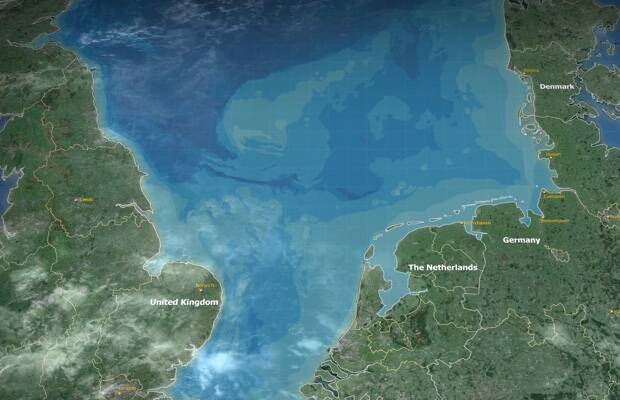Vision
Driven by global changes



Our activities have always been driven by global changes. The growing world population needs more space. Maritime transport requires new and improved infrastructure. Climate change necessitates better coastal protection. The demand for renewable energy is growing.

Van Oord classics - Driven by
maritime transport
Maasvlakte 2

Van Oord classics - Driven by
maritime transport
Second Suez Canal
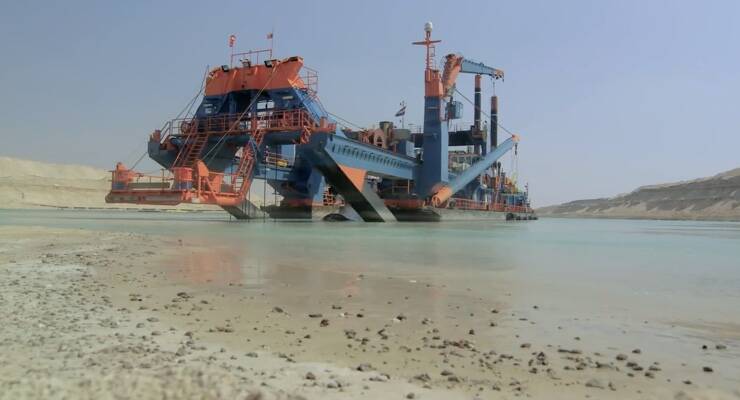
nautical depth to 14.5 metres at high tide was approved. Another important initiative of current port management is the opening of new inland waterways, a strategic move that will enhance access to the port complex. Studies project a cargo throughput of up to 155 million tonnes in 2020 and the addition of this inter-modal connectivity will ensure the efficient handling of larger cargo volumes, offering better quality of service without more traffic putting pressure on local roads.’
‘Over the last few decades, for instance, the increase in container transport has pushed the size of container vessels up to over 19,000 TEUs. The Port of Santos, responsible for almost a third of Brazil’s international trade and with an area of influence that extends across five states (Mato Grosso, Mato Grosso do Sul, Goiás, Minas Gerais and São Paulo), has also undergone several major upgrades that include an increase in terminal capacity and the significant expansion of its road, rail and waterway infrastructure. Just recently, an increase in the maximum
‘The growing volume of maritime trade worldwide has driven ports, terminals and the maritime industry to adapt to the demand for constant expansion and modernisation of their facilities.’
José Alex Oliva
President, Port of Santos, Brazil


Maritime transport






Van Oord classics - Driven by urbanisation
Palm Island

Van Oord classics - Driven by urbanisation
Chek Lap Kok

residential, retail, hospitality and leisure projects to accommodate these people. While I am immensely proud of all of our work, Palm Jumeirah stands out as the project that is not only recognised the world over but also took creativity and design to new levels. We are now building on the success of Palm Jumeirah to create Deira Islands, a new waterfront city that is set to become Dubai’s newest tourism, leisure and entertainment hub.’
‘Our globally-famous projects, including Palm Jumeirah, continue to set new standards in creative engineering and cutting-edge design, thanks to a highly skilled in-house team and world-leading marine contractors such as Van Oord. Dubai is growing. Its population is expected to double by 2030; it is the host city for Expo 2020 and has an ambitious but achievable tourism target of welcoming 20 million visitors a year by 2020. We are playing a major role in delivering new
‘Nakheel is at the forefront of the innovative, iconic waterfront developments that have placed Dubai on the world map.’
Ali Rashid Ahmed Lootah
Chairman of Nakheel, Dubai’s leading development company


Urbanisation






Van Oord classics - Driven by
a growing demand for energy
Gravity Based Structure for Arkutun Dagi
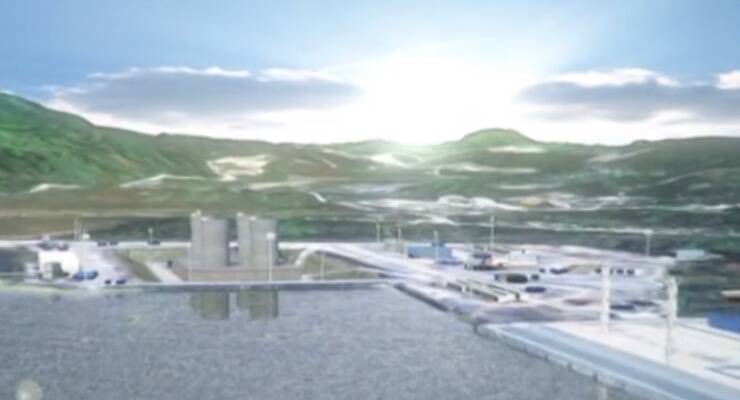
renewable energy and only 1% of cars run on electricity. The Netherlands must therefore pick up the pace, for example by generating much more offshore wind power. To succeed in speeding up the energy transition, we need business enterprises to cooperate with one another and with government. Shell Netherlands and Van Oord, for example, are already working together as the co-founders of the Energy Transition Coalition, but our two companies are also partners in the Borssele III/IV offshore wind consortium.’
‘Worldwide, it will take some time before we reach the tipping point between oil & gas and renewable energy. Countries differ considerably in their energy demand, ecological footprint, sustainability targets and pace of transition. In the Netherlands, for example, total demand will likely decline thanks to energy-efficiency efforts, people are very interested in sustainability, and the government coalition agreement has set a carbon emissions reduction target of 49% by 2030. At the same time, only about 6% of the Netherlands’ energy is
‘There is far too little renewable energy being generated today to meet the global demand for energy - a demand that continues to grow in many regions of the world.’
Marjan van Loon
President-Director Shell Netherlands


Growing demand for energy and the transition
towards a renewable energy system






Van Oord classics - Driven by climate change and the rising sea level
Dutch Delta Works

Van Oord classics - Driven by climate change and the rising sea level
Sand Motor

is subsiding. We expect that this will continue and that wet – and dry – periods will become more extreme. We are already observing greater extremes in precipitation. The Delta Programme aims to maintain the Dutch delta as a safe and attractive place to live and work, for present and future generations. I am proud that all national, regional and local authorities are cooperating with knowledge institutes and private parties to achieve this challenging goal and create an inspiring showcase for other deltas around the world.’
‘In the Netherlands, we have a long history of fighting floods. This is not surprising, as 60% of our country is flood prone. In the past, we responded to disasters by creating elaborate defence works like the Delta Works. These days we also prefer spatial solutions, like the Room for the River programme, and we focus on living with water instead of only fighting it. Our country is safe for now, but can become more vulnerable to the impact of future global changes. Our measurements show us that both temperature and sea water levels are rising and that the ground
‘Coastal regions and deltas across the globe benefit from their strategic locations, but such locations also face challenges. These are related to changes in sea level and the climate, to freshwater supply and water management.’
Wim Kuijken
Dutch Delta Commissioner


Climate change and the rising sea level




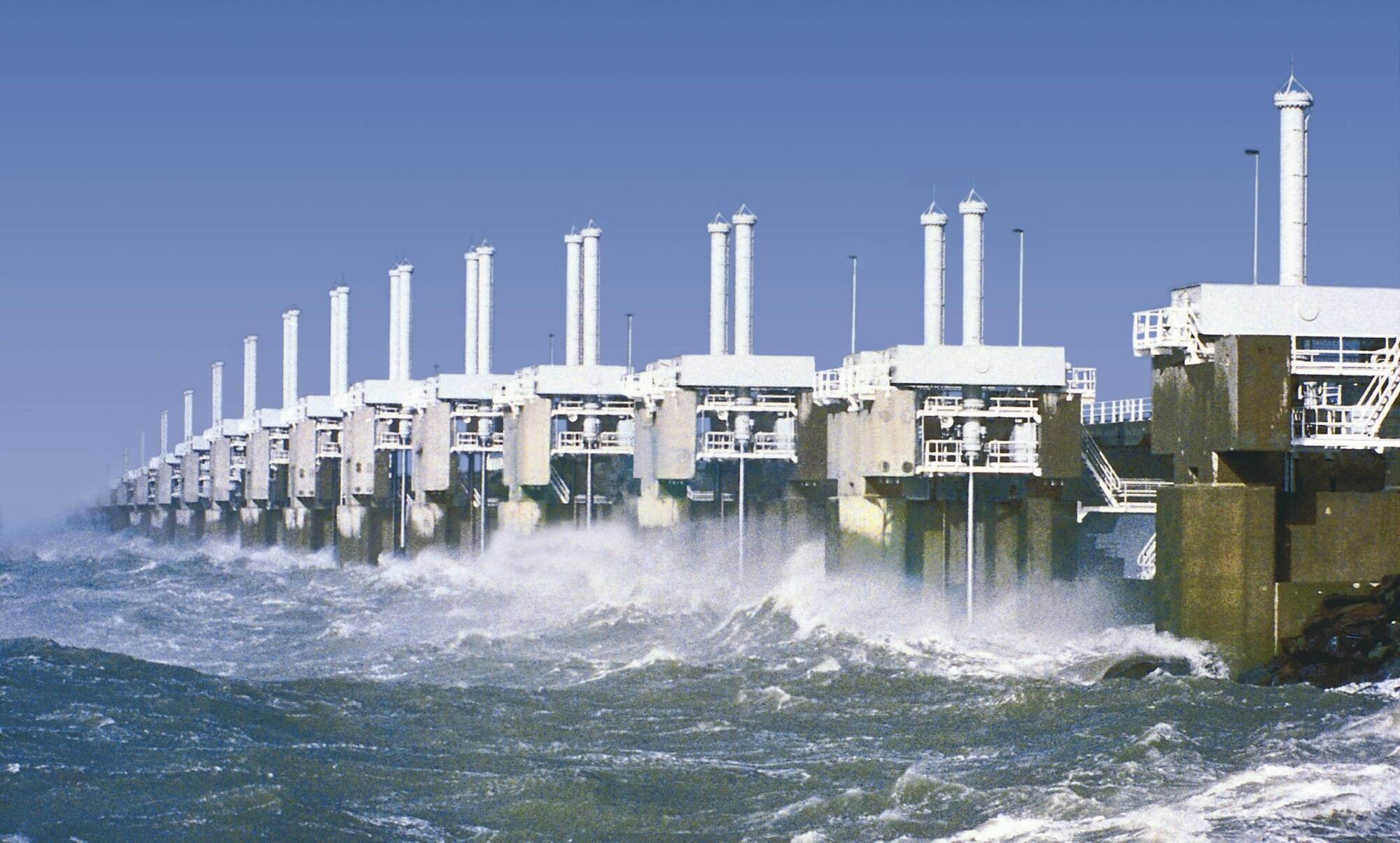

José Alex Oliva
President, Port of Santos, Brazil


Ali Rashid Ahmed Lootah
Chairman of Nakheel, Dubai’s leading development company


Wim Kuijken
Dutch Delta Commissioner


Marjan van Loon
CEO Royal Dutch Shell


Our activities have always been driven by global changes. The growing world population needs more space. Maritime transport requires new and improved infrastructure. Climate change necessitates better coastal protection. The demand for renewable energy is growing.
Vision
Driven by global changes



Execution period: 2008-2013
Location: Rotterdam, the Netherlands
Scope: The design and construction of a 700-hectare port expansion area, including 11 kilometres of sea defences, 3.5 kilometres of quay walls, 13 kilometres of roads and cycle paths, 14 kilometres of railway tracks, and the dredging of harbour basins to 20 metres below sea level.
Client: Port of Rotterdam




Facts & figures
Maasvlakte 2
Van Oord classics - Driven by
maritime transport
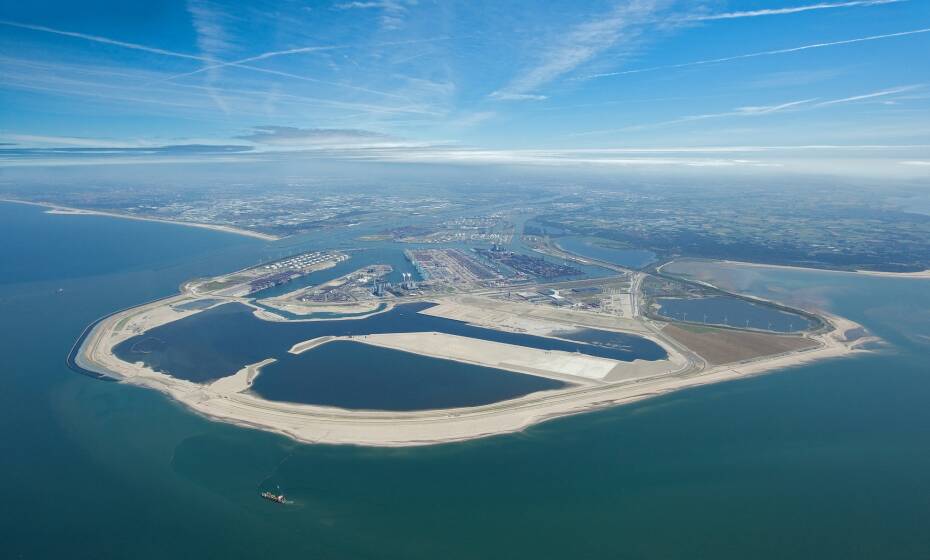
Execution period: 2014-2015
Location: Suez Canal, Egypt
Scope: The construction of a second Suez Canal to allow two-way container ship traffic. Around 200 million cubic metres of material was dredged for the 35-kilometre-long, 150-metre-wide channel.
Client: Suez Canal Authority




Facts & figures
Second Suez Canal
Van Oord classics - Driven by
maritime transport
‘Over the last few decades, for instance, the increase in container transport has pushed the size of container vessels up to over 19,000 TEUs. The Port of Santos, responsible for almost a third of Brazil’s international trade and with an area of influence that extends across five states (Mato Grosso, Mato Grosso do Sul, Goiás, Minas Gerais and São Paulo), has also undergone several major upgrades that include an increase in terminal capacity and the significant expansion of its road, rail and waterway infrastructure. Just recently, an increase in the maximum nautical depth to 14.5 metres at high tide was approved. Another important initiative of current port management is the opening of new inland waterways, a strategic move that will enhance access to the port complex. Studies project a cargo throughput of up to 155 million tonnes in 2020 and the addition of this inter-modal connectivity will ensure the efficient handling of larger cargo volumes, offering better quality of service without more traffic putting pressure on local roads.’
‘The growing volume of maritime trade worldwide has driven ports, terminals and the maritime industry to adapt to the demand for constant expansion and modernisation of their facilities.’

José Alex Oliva
President, Port of Santos, Brazil

Maritime transport



Execution period: 2001-2004
Location: Dubai, UAE
Scope: The engineering and construction of an artificial island in the shape of a palm tree. Approximately 700 million cubic metres of sand were reclaimed for Palm Jumeirah. It consists of a two-kilometre trunk and seventeen palm leaves that are now home to luxury villas and private beaches.
Client: Nakheel




Facts & figures
Palm Island
Van Oord classics - Driven by urbanisation

Execution period: 1993-1996
Location: Hong Kong, China
Scope: The reclamation of an artificial island to accommodate the new airport of Hong Kong. In total around 1248 hectares of land were reclaimed.
Client: Hong Kong Provisional Airport Authority




Facts & figures
Chek Lap Kok
Van Oord classics - Driven by urbanisation
‘Our globally-famous projects, including Palm Jumeirah, continue to set new standards in creative engineering and cutting-edge design, thanks to a highly skilled in-house team and world-leading marine contractors such as Van Oord. Dubai is growing. Its population is expected to double by 2030; it is the host city for Expo 2020 and has an ambitious but achievable tourism target of welcoming 20 million visitors a year by 2020. We are playing a major role in delivering new residential, retail, hospitality and leisure projects to accommodate these people. While I am immensely proud of all of our work, Palm Jumeirah stands out as the project that is not only recognised the world over but also took creativity and design to new levels. We are now building on the success of Palm Jumeirah to create Deira Islands, a new waterfront city that is set to become Dubai’s newest tourism, leisure and entertainment hub.’
‘Nakheel is at the forefront of the innovative, iconic waterfront developments that have placed Dubai on the world map.’
Ali Rashid Ahmed Lootah
Chairman of Nakheel, Dubai’s leading development company

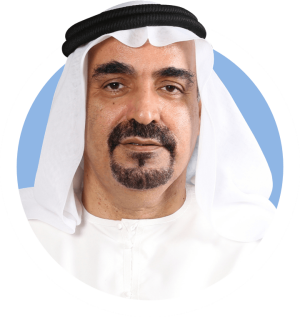
Urbanisation



Execution period: 2014-2016
Location: North Sea, the Netherlands
Scope: The design and construction of a 600-megawatt offshore wind park. The project encompassed the delivery and installation of the foundations, the entire electrical infrastructure (including the offshore and onshore high voltage stations), the cables, and the installation of 150 four-megawatt wind turbines.
Client: Gemini




Facts & figures
Gemini Offshore Wind Park
Van Oord classics - Driven by a growing demand for renewable energy

Execution period: 2012
Location: east of Sakhalin, Russian Federation
Scope: The transport and installation of a Gravity Based Structure (GBS) for the Arkutun Dagi oil and gas field. The platform’s GBS, which measured 135 by 100 metres wide and 55 metres high, had a total weight of 160,000 tonnes.
Client: Exxon Neftegas Limited




Facts & figures
Gravity Based Structure for Arkutun Dagi
Van Oord classics - Driven by
a growing demand for energy
‘Worldwide, it will take some time before we reach the tipping point between oil & gas and renewable energy. Countries differ considerably in their energy demand, ecological footprint, sustainability targets and pace of transition. In the Netherlands, for example, total demand will likely decline thanks to energy-efficiency efforts, people are very interested in sustainability, and the government coalition agreement has set a carbon emissions reduction target of 49% by 2030. At the same time, only about 6% of the Netherlands’ energy is renewable energy and only 1% of cars run on electricity. The Netherlands must therefore pick up the pace, for example by generating much more offshore wind power. To succeed in speeding up the energy transition, we need business enterprises to cooperate with one another and with government. Shell Netherlands and Van Oord, for example, are already working together as the co-founders of the Energy Transition Coalition, but our two companies are also partners in the Borssele III/IV offshore wind consortium.’
‘There is far too little renewable energy being generated today to meet the global demand for energy - a demand that continues to grow in many regions of the world.’
Marjan van Loon
President-Director Shell Netherlands


Growing demand for energy and the transition
towards a renewable energy system



Execution period: 1954-1997
Location: the Netherlands
Scope: The construction of 13 flood defences, including three locks, six dams and four storm surge barriers. Encompassing a total of 700 kilometres of flood defences, the Delta Works programme was initiated after the catastrophic flood that hit the Netherlands in February 1953.
Client: Former Dutch Ministry of Transport, Public Works and Water Management




Facts & figures
Dutch Delta Works
Van Oord classics - Driven by climate change and the rising sea level
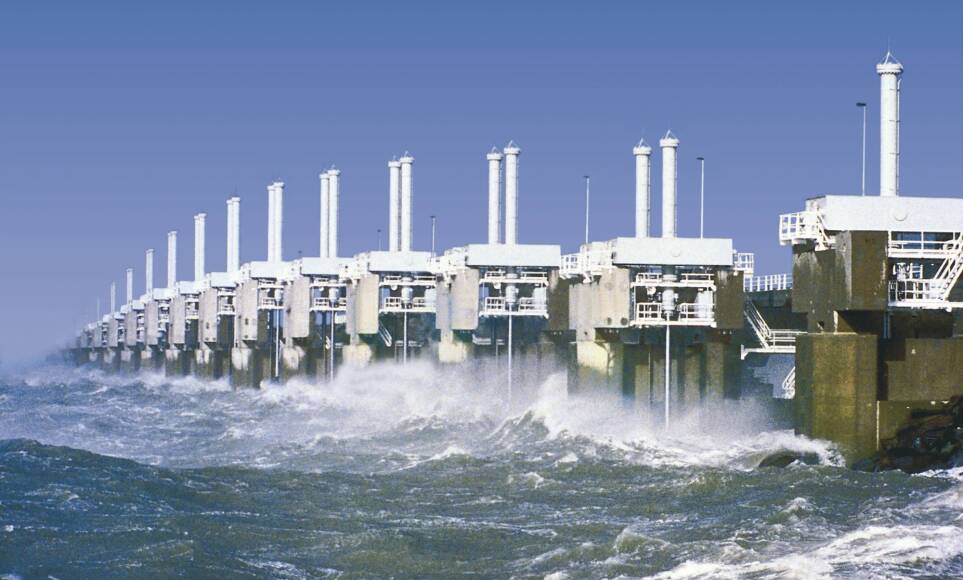
Execution period: 2011
Location: North Sea, the Netherlands
Scope: The engineering and construction of a hook-shaped peninsula of about 21.5 million cubic metres of sand for coastal protection. The Sand Motor is an example of Building with Nature: natural forces, such as waves, wind and tide, will transport the sand to the right place.
Client: Ministry of Infrastructure & Environment and the Province of Zuid-Holland




Facts & figures
Sand Motor
Van Oord classics - Driven by climate change and the rising sea level
‘In the Netherlands, we have a long history of fighting floods. This is not surprising, as 60% of our country is flood prone. In the past, we responded to disasters by creating elaborate defence works like the Delta Works. These days we also prefer spatial solutions, like the Room for the River programme, and we focus on living with water instead of only fighting it. Our country is safe for now, but can become more vulnerable to the impact of future global changes. Our measurements show us that both temperature and sea water levels are rising and that the ground is subsiding. We expect that this will continue and that wet – and dry – periods will become more extreme. We are already observing greater extremes in precipitation. The Delta Programme aims to maintain the Dutch delta as a safe and attractive place to live and work, for present and future generations. I am proud that all national, regional and local authorities are cooperating with knowledge institutes and private parties to achieve this challenging goal and create an inspiring showcase for other deltas around the world.’
‘Coastal regions and deltas across the globe benefit from their strategic locations, but such locations also face challenges. These are related to changes in sea level and the climate, to freshwater supply and water management.’
Wim Kuijken
Dutch Delta Commissioner


Climate change and the rising sea level





